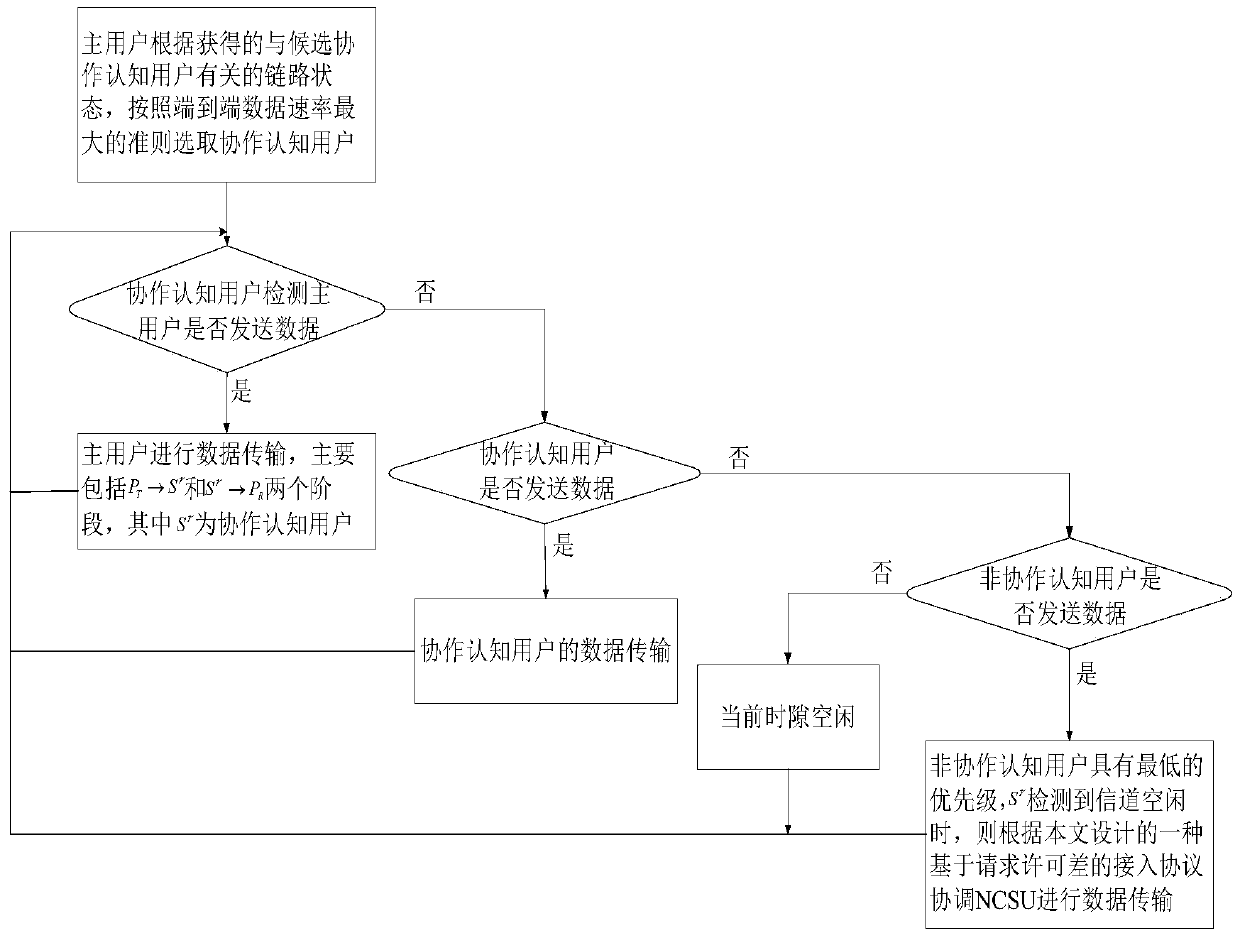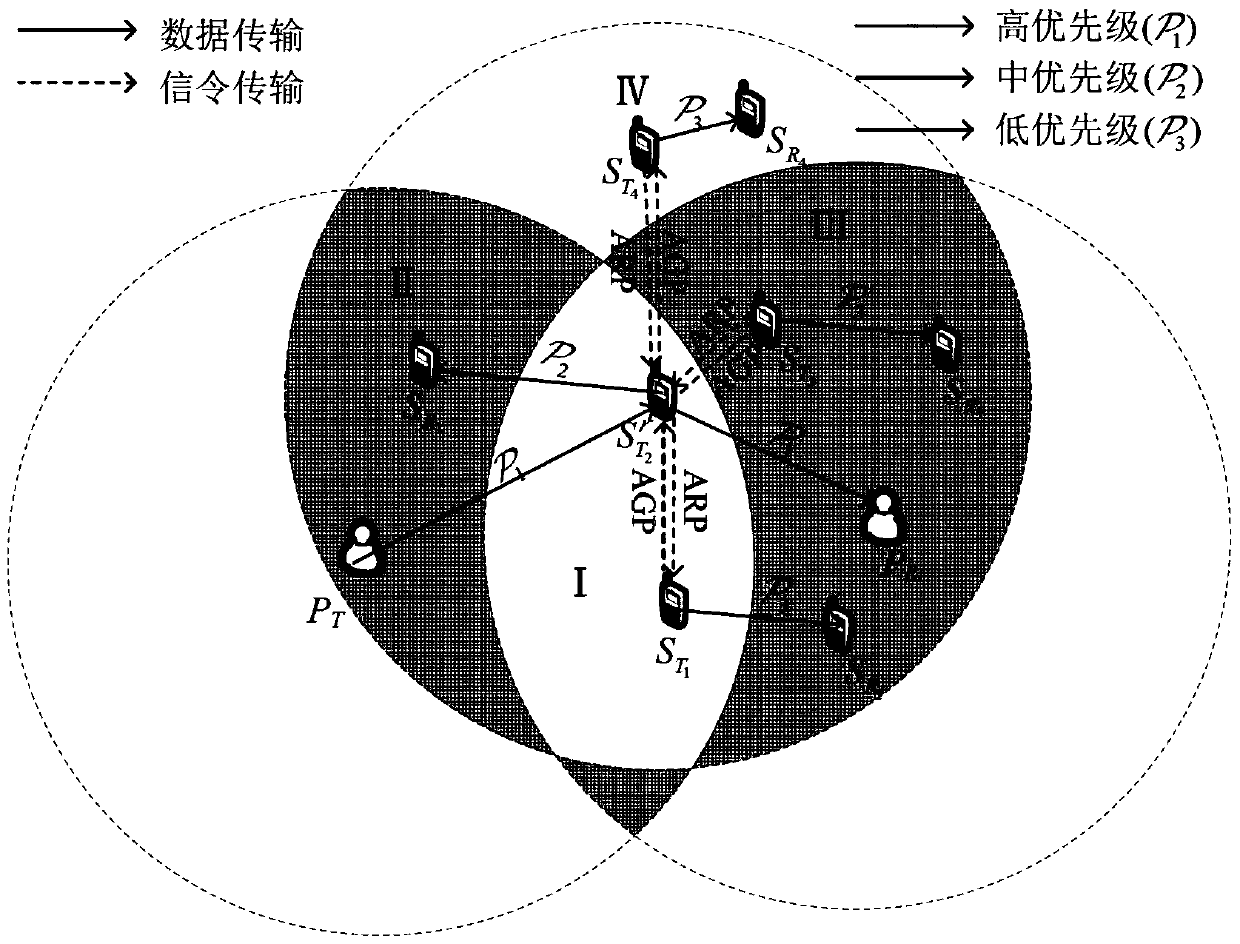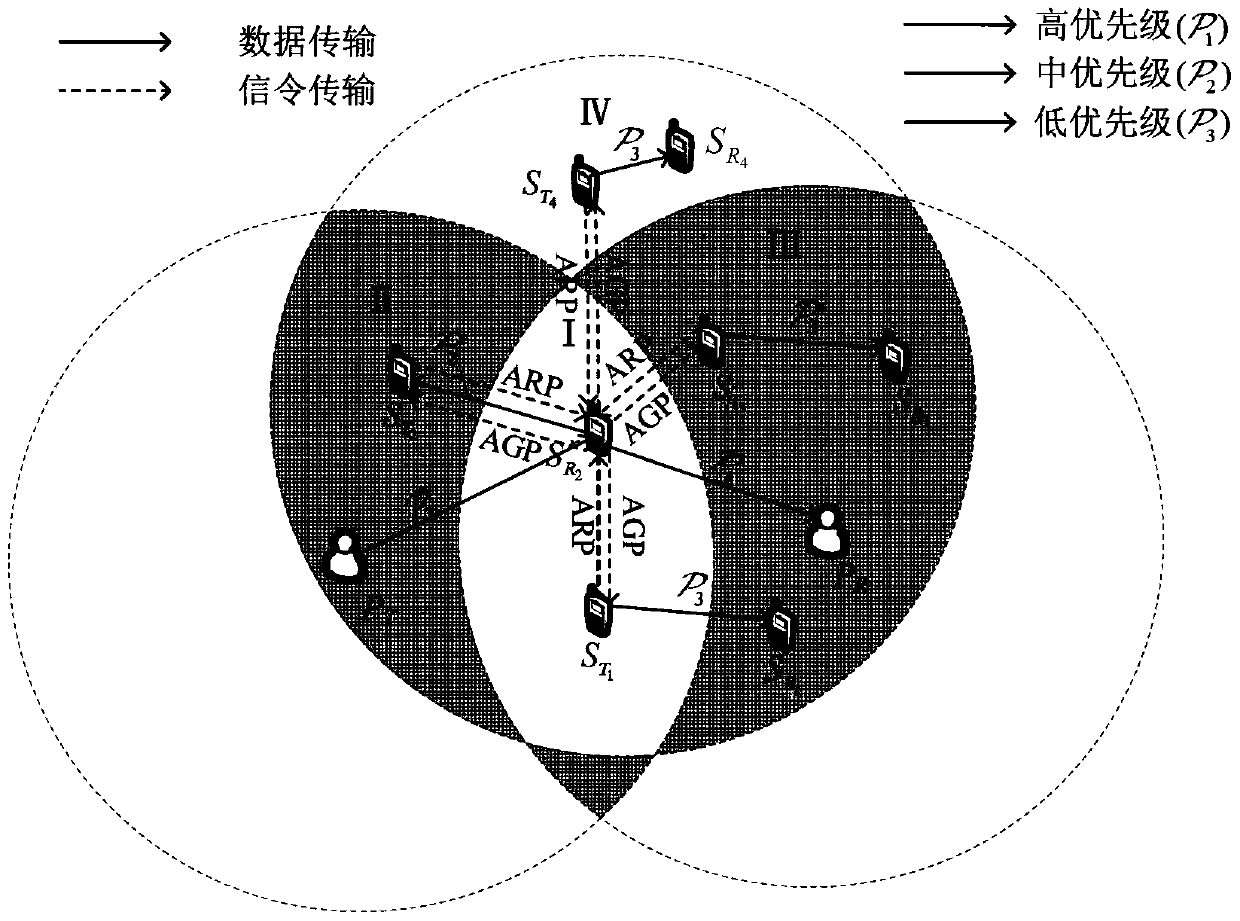A Two-Level Central Cooperative Spectrum Sharing Mechanism Based on Priority Queue
A technology of priority queuing and central collaboration, applied in electrical components, wireless communication, network planning, etc., can solve the problem of not fully considering the problem of resource allocation between cooperative cognitive nodes and non-cooperative cognitive nodes.
- Summary
- Abstract
- Description
- Claims
- Application Information
AI Technical Summary
Problems solved by technology
Method used
Image
Examples
Embodiment Construction
[0036] The present invention will be further described below in conjunction with the accompanying drawings. It should be noted that this embodiment is based on the technical solution and provides detailed implementation steps and operating procedures, but the protection scope of the present invention is not limited to this embodiment. .
[0037] Working principle of the present invention:
[0038] The present invention is applicable to a cooperative cognitive wireless network, including a pair of primary users and several pairs of cognitive users, and a primary user (PU) transmitter P T possible distance from its destination node P R The link quality cannot support P T to P R direct communication. When transmitting data, the PU has the highest priority, and the Cooperative Cognitive User (CSU)S r Second, the non-cooperative cognitive users (NCSU) have the lowest priority, where the CSU is responsible for coordinating the communication of the NCSU and guaranteeing the fair...
PUM
 Login to View More
Login to View More Abstract
Description
Claims
Application Information
 Login to View More
Login to View More - R&D
- Intellectual Property
- Life Sciences
- Materials
- Tech Scout
- Unparalleled Data Quality
- Higher Quality Content
- 60% Fewer Hallucinations
Browse by: Latest US Patents, China's latest patents, Technical Efficacy Thesaurus, Application Domain, Technology Topic, Popular Technical Reports.
© 2025 PatSnap. All rights reserved.Legal|Privacy policy|Modern Slavery Act Transparency Statement|Sitemap|About US| Contact US: help@patsnap.com



